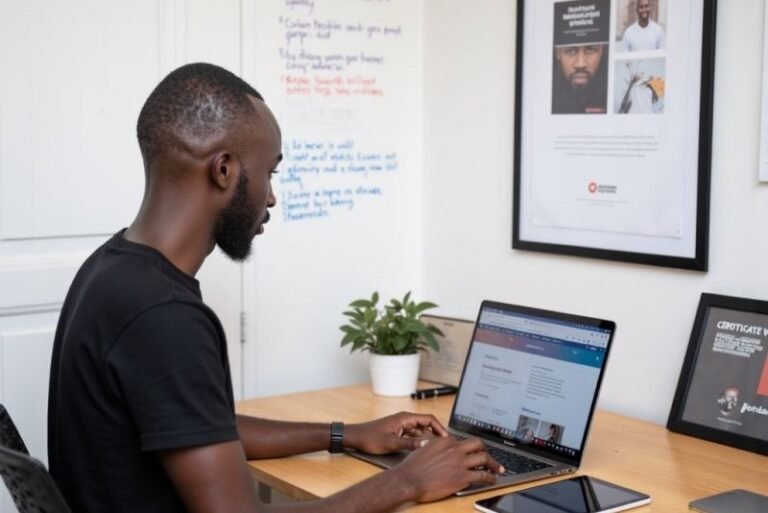The Follow-Up Strategy That Wins Silent Clients: A Freelancer’s Secret to Success
The Follow-Up Strategy That Wins Silent Clients: A Freelancer’s Secret to Success
Introduction: Why Following Up is Crucial for Freelancers
Following up is often underestimated in freelancing. Many freelancers expect clients to respond immediately, but in reality, most clients need time. If you’re not following up with potential clients, you’re missing out on opportunities. A well-timed, thoughtful follow-up can turn silent prospects into paying clients, helping you build lasting relationships and ensure a steady stream of income.
Why Clients Go Silent: Understanding the Reason Behind It
Understanding why clients go silent is key to crafting the right follow-up strategy. Here are a few reasons why they might not respond right away:
- They could be busy or overwhelmed with other tasks.
- They might need more time to review the proposal or make a decision.
- Budget or project scope discussions might still be in progress.
- They simply forgot to respond or are waiting for the right moment.
Rather than assuming they’re not interested, consider that they might just need a reminder or further clarity. This is where a strategic follow-up can make all the difference.
How to Follow Up Without Being Pushy
Effective follow-up is about balance. You don’t want to come across as pushy, but you also want to ensure your name stays top of mind. Here’s how you can follow up in a way that’s professional and considerate:
- Wait a Few Days Before Reaching Out
- Give clients some time before following up. If they haven’t responded in about 3-5 days, it’s appropriate to send a polite follow-up email.
- Keep It Polite and Professional
- Always be polite. Acknowledge their busy schedule and express understanding. Clients are more likely to engage with you if your tone is friendly and respectful.
- Provide Added Value in Your Follow-Up
- Don’t just ask for a response—offer something new. This could be additional portfolio pieces, insights that demonstrate your expertise, or a helpful resource that’s relevant to their needs.
- Be Clear About Next Steps
- Give clients clear options. Whether it’s scheduling a call or confirming a detail, making it easy for them to respond increases the likelihood that you’ll hear back.
Crafting the Perfect Follow-Up Email: A Template
Here’s a follow-up email template that strikes the right tone of professionalism and helpfulness.
Subject: Just Checking In – Any Questions About My Proposal?
Hi [Client Name],
I hope you’re doing well! I wanted to check in on the proposal I sent last week regarding [project name]. I understand you might be busy, but I wanted to follow up and see if you had any questions or if there was any additional information I can provide.
I’d love the opportunity to work together on this project and help [mention how your work will benefit the client].
Looking forward to hearing from you soon.
Best regards,
[Your Name]
[Your Contact Information]
When to Move On: Knowing When to Stop Following Up
While following up is essential, knowing when to move on is equally important. If you’ve sent two or three follow-up emails with no response, it’s time to stop. Continuing to chase the client after multiple attempts can have a negative impact on your reputation.
It’s a good idea to send a final, polite email thanking them for their time and offering to revisit the project in the future if their needs change. Sometimes, clients will revisit your offer months later, and having left a positive impression can lead to future work.
The Power of Consistency: Why Follow-Ups Matter
Consistency in following up shows your professionalism and commitment. Freelancers who follow up regularly and strategically are more likely to see conversions. Persistence, not desperation, is key to building strong client relationships.
Research shows that sales require persistence—up to five follow-ups in some cases. The clients who don’t respond immediately are often the ones who will need a gentle nudge to get back on track. Don’t be afraid to follow up multiple times, but always add value with each interaction.
Internal Links
- How to Package Your Freelance Services for Quick Client Approvals
- How to Turn One-Off Clients into Long-Term Contracts
Conclusion: Follow-Up is Key to Winning Clients and Building Relationships
Follow-up is one of the most powerful tools in a freelancer’s arsenal. It can mean the difference between a lost opportunity and a signed contract. By crafting thoughtful, strategic follow-ups, you not only win silent clients but also foster long-lasting relationships. Remember, freelancing is all about building trust, and follow-ups are a key part of that process.
Be persistent, be patient, and always offer value. Over time, this strategy will help you build a reliable pipeline of clients, allowing you to grow your freelance business with confidence.






